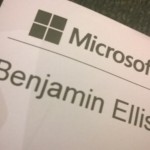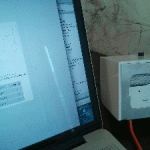Yesterday I joined a group of developers at Microsoft’s offices for the launch of Windows 10.  It is big stakes for Microsoft, as they attempt to restart the Windows upgrade cycle. While I have been a very happy Windows 8 user since the earliest preview release, both corporate IT and home users have given it a bit of a mixed reception, and delayed upgrades. Windows 10 is Microsoft’s attempt to address those perceptions, but as it turns out, it is much more.
It is big stakes for Microsoft, as they attempt to restart the Windows upgrade cycle. While I have been a very happy Windows 8 user since the earliest preview release, both corporate IT and home users have given it a bit of a mixed reception, and delayed upgrades. Windows 10 is Microsoft’s attempt to address those perceptions, but as it turns out, it is much more.
My key take aways from the launch:
- Microsoft is making it (very) easy to upgrade. Windows 10 will be a free upgrade to Windows 8.1, Windows Phone 8.1 and Windows 7 users, as long as you upgrade within a year of its release (spot the carrot and stick!). They are also providing early previews to a broad set of users via the Windows Insider Program.
- Windows is becoming more ‘universal’. Windows apps are coming to the Xbox and the Xbox is coming to Windows 10. Transition from tablet mode to desktop mode is (fairly) seemless and apps will be more uniform.
- Cortana has landed on the desktop. Cortana isn’t just a voice-enabled assistant, it is artificial intelligence to help your workflow. I particularly like the ability to inspect Cortana’s “notebook” (what it knows and has worked out about).
- Microsoft has stolen a technology lead with HoloLens. While Google Glass is faltering and Occulus Rift is yet to appear, HoloLens is a game changer, if they execute well. It is different to either, and bridges the ‘real’ and virtual worlds in a very, very seamless way.
These launch things are always a bit awkard turtle – us Brits don’t do hype the same way as the US – but I left excited about the possibilities Windows 10 will bring, and the kind of applications it will spawn. The 84 inch pen-driven Surface Hub looked very exiting, and I’d love to see some of SocialOptic‘s applications running on it, especially MilestonePlanner – as it looks perfect for digital collaboration. I’m also hoping we might see a smaller (and presumably more affordable) version of it too.





